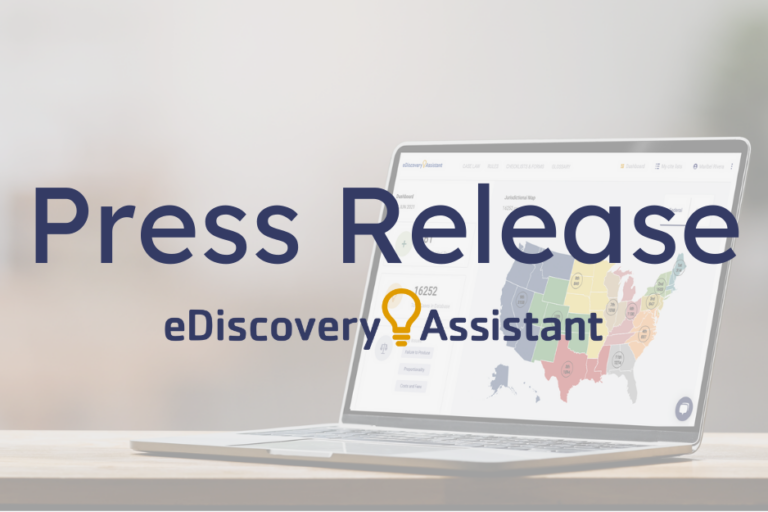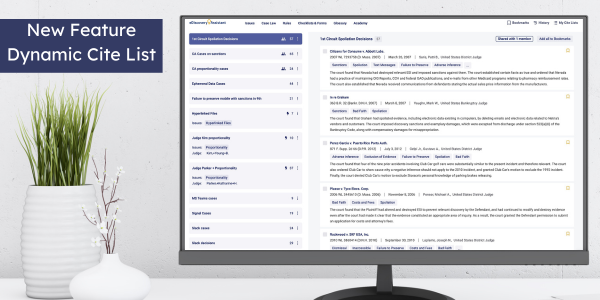A trial exhibit list is like an athlete. An athlete starts training with the championship in mind, not the next day or the next game. The preparation and hard work devoted over the months come to fruition heading into the big game. The athlete is conditioned and prepared, only making minor adjustments on the final stretch.
How to Create a Winning Trial Exhibit List
-
-
- Draft and implement an ESI Protocol
- Review the Judge’s Courtroom Procedures
- Review and Notate the Initial and Supplemental Disclosures
- Manage Deposition Exhibits
- Track Responses to Discovery Requests
-
When a new case is assigned, the trial date seems so far away, but the work you put in now on a trial exhibit list will pay off. Your trial exhibit list is the culmination of months or years of motion practice, document discovery, depositions and working through complicated factual issues. But putting together the listing of exhibits with metadata isn’t an easy task, and like a world class athlete, if you haven’t put in the time, you won’t be winning any medals OR trials. Follow these five tips from the outset of your case to put your trial team in a phenomenally better shape as you get ready to plan and create your exhibit list:
-
-
- Draft and implement an ESI Protocol. The importance of an ESI Protocol can never be minimized. It lays out the scope and process for collection/preservation, privilege, format, native files, metadata files, production, bates-numbering, and is the core of how ESI will be delivered. Be thoughtful and conform it to YOUR case. Do you have many images? What about source code? Social media? Make sure the protocol meets the needs for the sources of ESI that you anticipate. The format and metadata you receive as a result will be the basis to you build your review platform and, eventually, your trial exhibit list. If you don’t know where to start, read our series on how to draft and leverage an ESI protocol in any litigation: ESI Protocols Part I: Planning for eDiscovery – When, How and Why and ESI Protocols Part II: Components of an ESI Protocol.
- Review the Judge’s Courtroom Procedures. Most judges have courtroom procedures and a form trial exhibit list. Review to identify what information is required by the judge and use it in drafting the metadata and procedures for producing and receiving ESI in your protocol. Confirm this required information translate to fields in your review platform. Add fields such as Stipulated Trial Exhibit and Plaintiff/Defendant Objections as you begin to identify exhibits and create a unique view just for Trial Exhibits in your database.
- Review and Notate the Initial and Supplemental Disclosures. These disclosures are the only real place prior to discovery responses that allow you to manage custodians and process. Think about the importance of dates (for timelines), the custodians (who may become trial witnesses), and descriptions. If those fields are not populated by the metadata produced, you need to address your concerns immediately. Do not put it off or you’ll find yourself under the gun. Also consider how a document relates to the claims and the defenses (which may help with stipulations on trial exhibits), and create fields on your coding panel for them.That will help you organize motion practice, but also identify documents by issue for selection when adding documents to the trial exhibit list.
- Manage Deposition Exhibits. You’ve spent many hours (and probably many late nights) selecting the right exhibits for the examination — leverage all that work by making sure it’s notated in your database and that follow ups from the deposition are tracked. Create notes fields for records/documents in the database as needed to keep all info together. Tag what witness is associated with the document. Record the deposition exhibit number. Keep in mind that some exhibits may not contain the full bates number run of the document, so be sure to note if it is a partial bates run. If an exhibit was used without bates numbers, determine if it was or was not previously produced under the ESI Protocol. If not, track down the native, upload to the review platform and produce under the terms of the ESI protocol (or ask the other side to do the same if entered by opposing counsel). Managing all of these details during discovery will set you up brilliantly to create a trial exhibit list. Without these details, you’re starting from scratch and it’s going to cost a lot of money.
- Track Responses to Discovery Requests. Invest the time coding documents referenced to or produced in response to Interrogatories, Requests for Production or Requests for Admission. It will help when deciding on what documents to include on the trial exhibit list that were not used during deposition, AND act as guide for the attorneys on what RFPs still require responsive documents.
-
The more time you dedicate to maintaining your review platform and “training” the documents with coding and tagging, the better the results, the further ahead you’ll be in the case as a whole, but it will make creating your exhibit list a breeze. Remember to review data as you receive it and have a solid QC list of what you need rather than leaving things to the last minute.
Follow these tips just like your training plan getting ready for a race, because that’s exactly what trial prep is, a race to the finish.



